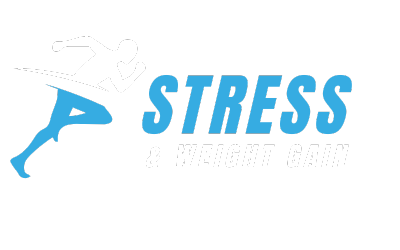Weightloss For Busy People Frustration
Are you constantly finding yourself frustrated with trying to lose weight while juggling a busy schedule? Look no further! In this article, we will address the common frustrations faced by busy individuals when it comes to weight loss and provide practical solutions to help you achieve your goals without sacrificing your time or sanity. Say goodbye to the stress and let us guide you towards a healthier and happier lifestyle.

Setting Realistic Expectations
Understanding the Challenges of Weight Loss for Busy Individuals
When it comes to weight loss, one of the biggest challenges for busy individuals is finding the time and energy to prioritize their health and fitness goals. With hectic schedules filled with work, family responsibilities, and other obligations, it can feel overwhelming to add weight loss efforts on top of everything else. However, it’s important to understand that Achieving and maintaining a healthy weight is a long-term commitment that requires patience and perseverance.
Recognizing the Importance of Realistic Goals
Setting realistic goals is paramount in the weight loss journey for busy individuals. It’s essential to recognize that weight loss is a gradual process and that it’s not realistic to expect dramatic results overnight. Taking small, sustainable steps towards your goals is the key to long-term success. By setting achievable goals, you can avoid feeling discouraged and frustrated, and instead, focus on making consistent progress.
Identifying the Impact of Lifestyle and Time Constraints
Busy individuals often struggle with weight loss due to lifestyle factors and time constraints. Juggling multiple responsibilities can lead to poor dietary choices, lack of physical activity, and increased stress levels. It’s important to acknowledge these challenges and find ways to manage them. By identifying the areas in your life where time constraints and lifestyle habits may hinder your weight loss efforts, you can develop strategies to overcome these obstacles and make positive changes.
Overcoming Time Constraints
Effective Time Management Techniques
When it comes to weight loss, time management plays a crucial role. By effectively managing your time, you can carve out dedicated moments for exercise, meal planning, and self-care. Some effective time management techniques include creating a schedule or daily planner, prioritizing tasks, and delegating responsibilities when possible. By making time for your health and well-being, you can overcome the barriers posed by a busy schedule.
Prioritizing Health and Fitness in a Hectic Schedule
As a busy individual, it’s important to recognize that your health should be a top priority. It’s easy to let your health take a backseat when juggling various commitments, but making a conscious effort to prioritize your well-being is essential for successful weight loss. This may involve scheduling regular exercise sessions, meal prepping in advance, and setting aside time for self-care activities such as meditation or relaxation exercises. By making health and fitness a priority, you can create a sustainable routine that supports your weight loss journey.
Making the Most of Short Breaks and Lunch Hours
Even with a jam-packed schedule, there are opportunities to incorporate physical activity into your day. Making the most of short breaks and lunch hours can be an effective way to sneak in some exercise. Consider going for a brisk walk during your lunch break or doing a quick workout routine during short breaks throughout the day. These small bursts of physical activity can add up and contribute to your overall weight loss efforts.
Finding the Right Workout Routine
Assessing Personal Fitness Levels
Before embarking on any workout routine, it’s important to assess your current fitness levels. This will help you determine your starting point and set realistic goals. You can assess your fitness levels by measuring your endurance, strength, and flexibility. This can be done through simple exercises such as a timed walk or run, push-ups, and flexibility tests. Understanding your current fitness level will allow you to choose a workout routine that is appropriate for your needs and abilities.
Exploring Time-Efficient Workouts
For busy individuals, time efficiency is key when it comes to exercise. Look for workout routines that offer maximum benefit in a short amount of time. High-intensity interval training (HIIT) is a popular and effective option for those with limited time. HIIT workouts involve alternating periods of high-intensity exercise with short rest periods. These workouts can be completed in as little as 20-30 minutes and provide a great cardiovascular and strength training workout.
Incorporating High-Intensity Interval Training (HIIT)
As mentioned earlier, HIIT can be a game-changer for busy individuals looking to lose weight. HIIT workouts are effective because they torch calories and boost your metabolism even after the workout is over. They can be easily adapted to different fitness levels and can be done with minimal equipment. By incorporating HIIT workouts into your routine two to three times a week, you can maximize your calorie burn and achieve weight loss goals efficiently.
Engaging in Active Commuting
Another way for busy individuals to include physical activity in their daily routine is by engaging in Active commuting. Instead of relying solely on cars or public transportation, consider walking or biking to work or your destination when feasible. This not only helps you incorporate more physical activity into your day but also reduces your carbon footprint. Active commuting can be a fun and convenient way to incorporate exercise into your routine while saving time and money.

Conquering Nutritional Challenges
Meal Planning and Prepping Tips for Busy Individuals
One of the biggest challenges busy individuals face when it comes to weight loss is making healthy eating choices. Meal planning and prepping can significantly help overcome these challenges. Dedicate some time each week to plan your meals and create a grocery list. By having a plan in place, you can avoid relying on unhealthy convenience foods or resorting to takeout. Additionally, consider prepping your meals in advance. This can involve cooking in bulk or pre-chopping ingredients for easy and quick assembly during busy days.
Navigating Healthy Eating in Social and Work Settings
Social and work settings can pose challenges when it comes to healthy eating. However, with some strategies in place, you can navigate these situations successfully. When dining out, opt for healthier menu options, such as grilled or baked dishes, salads, and vegetable-based sides. If attending social gatherings or work events, be mindful of portion sizes and try to make conscious choices by filling your plate with nutritious options. By planning ahead and making smart choices, you can enjoy these settings while still adhering to your weight loss goals.
Making Smart Food Choices on the Go
Busy individuals often find themselves eating on the go, which can lead to unhealthy food choices. However, with some awareness and planning, you can make smart food choices even when you’re on the move. Opt for healthier options, such as salads, wraps, or fresh fruit, when grabbing a quick bite. Additionally, consider keeping nutritious snacks on hand, such as nuts, dried fruit, or granola bars, to avoid giving in to temptations of unhealthy fast food or vending machine options.
Managing Stress and Emotional Eating
Understanding the Relationship Between Stress and Weight Gain
Stress is a common factor in the lives of busy individuals, and it can have a significant impact on weight gain. When stressed, the body releases cortisol, which can lead to increased appetite and cravings for high-calorie foods. This can result in weight gain over time. Understanding this relationship is crucial in managing stress-related weight gain and Developing effective coping strategies.
Implementing Stress-Relief Techniques
To manage stress and reduce the risk of emotional eating, it’s important to implement stress-relief techniques. This can include activities such as meditation, yoga, deep breathing exercises, or engaging in hobbies you enjoy. Find what works best for you and make time for these activities regularly. By managing stress effectively, you can prevent emotional eating episodes and maintain a healthier relationship with food.
Developing Alternative Coping Mechanisms
Finding alternative coping mechanisms is essential in breaking the cycle of emotional eating. Instead of turning to food for comfort or stress relief, explore other ways to manage your emotions. This can involve journaling, talking to a supportive friend or family member, engaging in physical activity, or practicing relaxation techniques. By developing healthier coping mechanisms, you can break the cycle of emotional eating and maintain a balanced approach to food.
Incorporating Physical Activity into Daily Life
Utilizing Active Transportation Methods
Incorporating Physical activity into daily life doesn’t always require dedicated workout sessions. By utilizing active transportation methods, you can seamlessly integrate exercise into your day. Consider walking or biking to your destinations instead of driving, whenever possible. If your commute is too long, try parking farther away from your destination and walking the remaining distance. These small changes can add up and contribute to your overall physical activity levels.
Finding Opportunities for Movement at Work
Many individuals spend a significant amount of time at work, often in sedentary positions. However, finding opportunities for movement at work can significantly impact your overall health and weight loss efforts. Take frequent breaks to stand up, stretch, or go for a short walk. Consider using a standing desk or taking walking meetings whenever possible. By incorporating movement into your workday, you can counteract the negative effects of prolonged sitting.
Making Exercise a Family Affair
For busy individuals with family responsibilities, incorporating exercise into daily life can be challenging. However, making exercise a family affair can be a fun and effective solution. Plan activities such as family walks, bike rides, or outdoor games. Encourage your family members to join you in your fitness pursuits. By involving your loved ones, you not only make exercise more enjoyable but also create healthy habits for the whole family.
Utilizing Technology and Apps
Tracking Caloric Intake and Expenditure
Technology has made it easier than ever to track caloric intake and expenditure. Utilize apps or online tools that allow you to log your meals and physical activity. These tools provide valuable insight into your overall calorie balance and can help you make informed decisions about your diet and exercise. By tracking your progress, you can stay accountable and make adjustments as needed to reach your weight loss goals.
Using Fitness Apps and Wearable Devices
Fitness apps and wearable devices are a great way to stay motivated and monitor your progress. There are numerous apps available that offer workout routines, guided meditation, nutrition tracking, and more. Additionally, wearable devices such as fitness trackers can provide real-time data on your physical activity levels, heart rate, and sleep patterns. By utilizing these technologies, you can stay engaged, motivated, and aware of your overall health and wellness.
Exploring Online Support and Accountability Tools
Online support and accountability tools can be invaluable for busy individuals on their weight loss journey. Joining weight loss communities, online forums, or social media groups can provide a sense of camaraderie and support. Additionally, accountability apps or programs can help you stay on track by setting goals, tracking progress, and connecting with others who share similar goals. By utilizing these online resources, you can tap into a wealth of knowledge, gain support from like-minded individuals, and stay motivated throughout your weight loss journey.
Finding Support and Accountability
Engaging in Weight Loss Communities and Forums
Engaging with weight loss communities and forums can provide a wealth of support and accountability. These online communities are filled with individuals who are on similar weight loss journeys and can offer advice, motivation, and encouragement. Participate in discussions, ask questions, and share your own experiences. By connecting with others who are going through similar challenges, you can find the support and accountability needed to stay on track with your weight loss goals.
Sharing Goals and Progress with Friends and Family
Sharing your weight loss goals and progress with friends and family can also provide support and accountability. Letting those close to you know about your aspirations allows them to offer encouragement and help keep you motivated. Consider finding a workout buddy or involving a family member in your meal planning and prep. By involving others in your weight loss journey, you create a support system that can help you stay focused and committed.
Employing the Services of a Weight Loss Coach or Personal Trainer
For additional support and accountability, consider employing the services of a weight loss coach or personal trainer. These professionals are experienced in guiding individuals through their weight loss journeys and can provide personalized guidance and motivation. They can help you set realistic goals, develop a customized workout routine, and provide expert advice on nutrition. By working with a coach or trainer, you benefit from their knowledge and expertise and increase your chances of success.
Cultivating Healthy Habits
Establishing Consistent Sleep Patterns
Establishing consistent sleep patterns is crucial for overall health and weight management. Lack of sleep can disrupt hunger hormones, increase cravings for unhealthy foods, and negatively impact metabolism. Aim for 7-9 hours of quality sleep each night and create a relaxing bedtime routine. By prioritizing sleep, you optimize your body’s natural processes and set a solid foundation for weight loss.
Hydrating Properly Throughout the Day
Proper hydration is often overlooked but plays a vital role in weight loss and overall health. Drinking an adequate amount of water throughout the day helps regulate appetite, supports metabolism, and promotes optimal bodily functions. Carry a reusable water bottle with you and make it a habit to drink water regularly. Avoid sugary drinks and prioritize water as your main source of hydration.
Incorporating Mindful Eating Practices
Mindful eating practices can help you develop a healthy relationship with food and prevent overeating. Slow down during meals, savor each bite, and pay attention to your body’s hunger and fullness cues. Avoid distractions such as TV or electronic devices while eating. By being present and mindful during meals, you can enhance your enjoyment of food, make healthier choices, and prevent mindless eating.
Recognizing Non-Scale Victories
Shifting the Focus from Weight to Overall Wellness
While weight loss is often the primary goal, it’s important to shift the focus from weight to overall wellness. Recognize that there are various measures of progress beyond the number on the scale. Focus on factors such as increased energy levels, improved mood, clothing fit, and physical strength. By shifting your mindset to overall wellness, you can celebrate these non-scale victories and stay motivated on your weight loss journey.
Celebrating Small Achievements and Positive Changes
In addition to non-scale victories, it’s essential to celebrate small achievements and positive changes along the way. Acknowledge and reward yourself when you reach milestones, such as consistently sticking to your workout routine or choosing healthier food options. Celebrating these small victories boosts motivation and provides a sense of accomplishment, fueling your drive to continue making positive changes.
Tracking Non-Scale Indicators of Progress
To gauge your progress accurately, consider tracking non-scale indicators of progress. These can include measurements of body fat percentage, endurance levels, strength gains, or improvements in flexibility. Take progress photos or keep a journal to document these changes. By tracking these non-scale indicators, you can see tangible proof of your progress, even when the scale may not reflect it.
In conclusion, weight loss for busy individuals may come with its fair share of challenges, but with a practical and realistic approach, it is achievable. By understanding the challenges, prioritizing health and fitness, incorporating physical activity, making smart nutritional choices, managing stress, utilizing technology, finding support, cultivating healthy habits, and recognizing non-scale victories, busy individuals can overcome barriers and achieve their weight loss goals. Remember, progress takes time, and by taking consistent steps towards a healthier lifestyle, you can create lasting change and enjoy the benefits of a balanced and fulfilled life.

